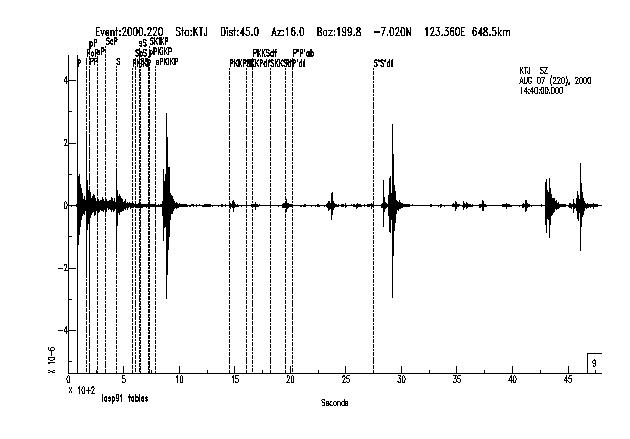Audio

This is a teleseismic earthquake recorded in the midst of a series of local earthquakes happening near the seismic station. The distant earthquake, which you see at the beginning of the seismogram, is followed by about 14 local earthquakes, unrelated to the first one. In total, the seismogram lasts for 80 minutes, which is why there is enough time to get all the local earthquakes included in the seismogram.
Most of the activity from the teleseism is over by about 500 seconds into the seismogram. Around 800 seconds, you get hear a sharp crack of a local earthquake, followed by a series of much smaller local earthquakes between 1500 and 2500 seconds. Then there is another strong local earthquake at around 2800 seconds, followed by a series of smaller ones, and, finally, a pair of local earthquakes separated by around 400 seconds.
The teleseism's P- and S-wave arrivals resonate with low-frequency energy. They sound richer, and seem to echo due to their coda, or slowly waning tail of later-arriving energy. In contrast, the local earthquakes are very sharp, abrupt cracks devoid of richness in lower-frequency sounds. Your ear is picking out the difference between the frequency content of local earthquakes, whose seismic waves do not travel far, and so do not become attenuated. In contrast, the teleseism, which is around 5000 km away from the seismometer, is very depleted in the higher frequencies, leading to the difference in tonal quality, easily detected by your ear.
There are many arrivals marked in the seismogram for the teleseismic earthquake. The principal ones are the P arrival at around 100 seconds, the PcP arrival at around 200 seconds, and the S arrival at around 450 seconds. The only other prominent teleseismic arrival is PKKP at around 1450 seconds. All the other visible wiggles on the seismogram are due to the local earthquakes.
| Teleseism and local earthquakes Audio |

|